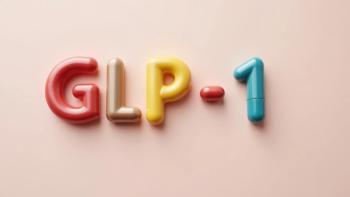
Coping With Burnout in the Pharmacy
Mitigating the likelihood of pharmacy staff burnout requires a multifactorial approach.
With millions of health care professionals heroically fighting COVID-19 on the front lines, battle fatigue has surely kicked in for some. This battle fatigue transcends mere tiredness and is more specifically referred to as burnout.
As a concept, burnout was first proffered by a clinical psychologist named Herbert Freudenberger, who volunteered at a free clinic in the 1970s and observed that the demands of the job left many of the workers feeling emotionally drained, resulting in frustration, fatigue, and cynicism.1
This concept was further refined by Christina Maslach who defined burnout as consisting of decreased feelings of personal accomplishment, as well as depersonalization and emotional exhaustion.2 The idea of burnout is of particular importance to people who work in the pharmacy field because of the impact that it can potentially have, not only on the personal well-being of pharmacy staff but also on the health outcomes of the patients they serve.
A recent meta-analysis demonstrated that physician burnout led to decreased professionalism, which negatively impacted patient care satisfaction.3 Burnout can also lead to lapses in judgement, resulting in medical errors.4
In the field of pharmacy, providing efficient customer service and eliminating medication errors are 2 of the highest priorities. A 2017 study focused on pharmacists found that the rate of burnout among clinical pharmacists was 61.2%.5
Mitigating the likelihood of burnout requires a multifactorial approach. Some of the precipitating causes of burnout include spending too many hours at work per week, increased level of bureaucratic responsibilities, and poor relationships with supervisors.1,6
As such, addressing burnout is a concern among individual employees and organizational leaders/supervisors. On an individual level, there are several things to consider.
A 2018 study examining PGY1 pharmacy residents found that staying optimistic, participating in enjoyable activities, and spending time with family and friends were among the most effective coping strategies to mitigate feelings of burnout throughout their residency.7
These findings are validated by a meta-analysis conducted by Shin et al.8 Their study analyzed 2 kinds of coping strategies—problem-focused and emotion-focused—and the relationship that these strategies have with the 3 dimensions of burnout defined by Maslach.8
Problem-focused coping attempts to solve a stressful situation by directly targeting the stressor to decrease or minimize it.9 Emotion-focused coping attempts to manage stress by focusing on the negative emotional reactions to the stressful situation and instead of taking actions to alter the stressor using tools such as prayer, meditation, positive reframing, or relaxation techniques that help change our perspective.10
Both of the aforementioned strategies served particular uses and helped to mitigate feelings of burnout. With these results in mind, pharmacy professionals can develop their own stress-reducing strategies to guard against burnout in the workplace.
On an organizational level, a progressive strategy to mitigate employee burnout was taken at Stanford Hospital, which recently created a position called Chief Wellness Officer.11 This person takes on the responsibility of creating initiatives to combat physician burnout within their institution.11
With this idea in mind, pharmacy practices and institutions can also consider taking a more intentional approach towards combatting burnout in the workplace. Because pharmacy professions also demonstrate high rates of burnout, developing an organizational leadership approach would be in our collective interests.
To assist health care workers, organizations can consider implementing or expanding access for mental health and self-care resources.1 Providing education about the symptoms of burnout so that we can recognize it within ourselves and our co-workers can also help to create a culture within our practices or institutions that allow us to mitigate the negative outcomes that burnout can have on ourselves, our co-workers, and our patients.
Additionally, given that burnout often stems from stress in dealing with supervisors, those in supervisory positions can take heed and be more mindful of their verbal engagements to ensure that employees understand that their contributions are of value to the organization.
Avoiding burnout is contingent upon developing effective coping strategies on the individual and organizational level. It requires intentional efforts from both employees and supervisors. Some coping strategies are more effective than others, but there is no one-size-fits-all.
For some persons, this may involve leaning on the social and spiritual atmosphere of religious faith. For others, it may involve directly intervening in the stressors of the workplace to mitigate stress.
For many, it likely involves a combination of emotion- and problem-focused approaches to deal with the everyday stresses we face on the job. Regardless of the approach, pharmacy professionals must confront the reality of burnout and the implications it has on our personal well-being and the health outcomes of our patients.
In confronting this reality, we can begin to make personal changes in our life and lobby for organizational changes to create a positive workplace environment. In doing so, we will help to revitalize ourselves as we continue to provide efficient patient care during the COVID-19 pandemic and beyond.
References
- Reith TP. Burnout in United States Healthcare Professionals: A Narrative Review. Cureus 2018; doi: 10.7759/cureus.3681
- Maslach C, Jackson SE. The measurement of experienced burnout. Journal of Organizational Behavior 1981; doi: 10.1002/job.4030020205
- Panagioti M, Geraghty K, Johnson J. A Systemic Review and Meta-analysis: Association Between Physician Burnout and Patient Safety, Professionalism and Patient Satisfaction. JAMA Intern Med 2018; doi: 10.1001/jamainternmed.2018.3713
- Tawfik DS, Profit J, Morgenthaler TI, Satele DV, Sinsky CA, Dyrbe LN, Tutty MA, West CP, Shanafelt TD. Physician Burnout, Well-being, and Work Unit Safety Grades in Relationship to Reported Medical Errors. Mayo Clin Proc 2018; doi: 10.1016/j.mayocp.2018.05.014
- Jones GM, Roe NA, Louden L, Tubbs CR. Factors Associated with Burnout Among US Hospital Clinical Pharmacy Practitioners: Results of a Nationwide Pilot Survey. Hosp Pharm 2017; doi: 10.1177/0018578717732339
- Desselle SP, Darbishire PL, Clubbs BH. Pharmacy faculty burnout: Cause for concern that requires our support and use of best evidence. Innovations in Pharmacy. 2020; 11(3):https://pubs.lib.umn.edu/index.php/innovations/article/view/3274
- Zinurova E, Dehart R. Perceived Stress, Stressors, and Coping Mechanisms Among PGY1 Pharmacy Residents. Am J Pharm Educ 2018; doi: 10.5688/ajpe6574
- Shin H, Park YM, Ying JY et al. Relationships Between Coping Strategies and Burnout Symptoms: A Meta-Analytic Approach. Professional Psychology: Research and Practice 2014; doi: 10.1037/a0035220
- APA Dictionary of Psychology. (n.d.) Retrieved February 01, 2021, from https://dictionary.apa.org /problem-focused-coping
- APA Dictionary of Psychology. (n.d.) Retrieved February 01, 2021, from https://dictionary.apa.org/emotion-focused-coping
- Richter R. In a first for U.S. academic medical center, Stanford Medicine hires chief physician wellness officer. Stanford Medicine News Center 2017.
Newsletter
Stay informed on drug updates, treatment guidelines, and pharmacy practice trends—subscribe to Pharmacy Times for weekly clinical insights.

















































































































































































































